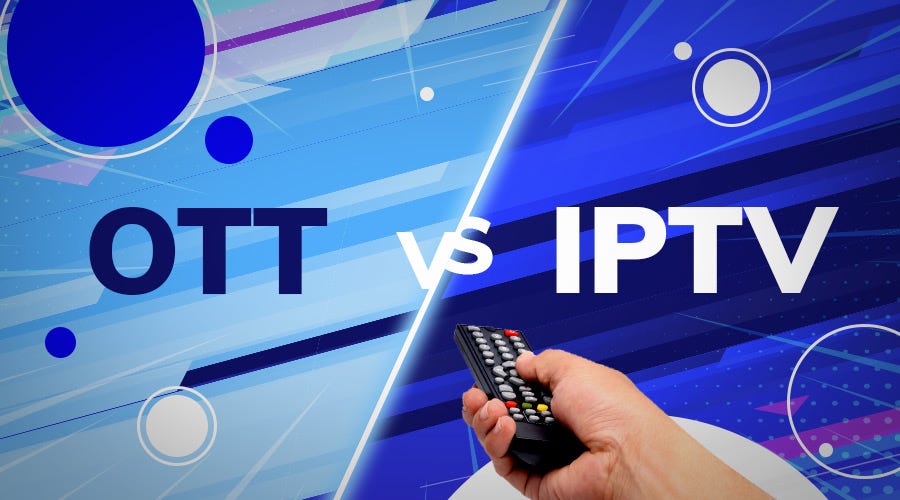Introduction
In the realm of television and streaming services, two terms often mentioned are IPTV and OTT. While both offer innovative ways to consume content, they differ significantly in their technology and delivery methods. Understanding the distinctions between IPTV (Internet Protocol Television) and OTT (Over-the-Top) is crucial for consumers navigating the vast array of entertainment options available today. In this blog post, we’ll explore the differences between IPTV and OTT, shedding light on their unique characteristics and functionalities.
Defining IPTV and OTT
Before delving into the differences, let’s define IPTV and OTT
- IPTV (Internet Protocol Television): IPTV refers to the delivery of television content over Internet Protocol (IP) networks, such as the internet or local area networks (LANs). It allows users to stream live TV channels, on-demand videos, and other multimedia content to their devices, including smart TVs, computers, smartphones, and set-top boxes.
- OTT (Over-the-Top): OTT refers to the delivery of audio, video, and other media content over the internet without the involvement of traditional cable or satellite providers. OTT services bypass traditional distribution channels, allowing consumers to access content directly over the internet through devices like smartphones, tablets, smart TVs, and streaming media players.
Understanding the Differences
Now, let’s delve into the key differences between IPTV and OTT
- Delivery Method: The primary difference between IPTV and OTT lies in their delivery methods. IPTV delivers content over managed IP networks, such as those operated by telecommunications providers or cable companies. In contrast, OTT services deliver content over unmanaged networks, such as the public internet, allowing for greater flexibility and accessibility.
- Content Quality and Control: IPTV typically offers higher-quality content and more extensive control over the viewing experience compared to OTT services. Because IPTV content is delivered over managed networks, providers can prioritize bandwidth and ensure consistent streaming quality. Additionally, IPTV providers may offer features such as DVR functionality, video-on-demand (VOD), and interactive services, enhancing the overall viewing experience.
- Business Models: IPTV and OTT services often operate under different business models. IPTV services are typically offered as part of bundled packages by telecommunications providers or cable companies, alongside internet and phone services. In contrast, OTT services are typically standalone subscription-based services or ad-supported platforms, offering consumers a wide range of content options with varying pricing structures.
Conclusion
In conclusion, while both IPTV and OTT offer innovative ways to access television content over the internet, they differ significantly in their delivery methods, content quality, control, and business models. Understanding these differences is essential for consumers seeking to make informed decisions about their entertainment options. Whether you prefer the reliability and control of IPTV or the flexibility and accessibility of OTT, both technologies continue to shape the future of television and streaming services, providing consumers with diverse and personalized viewing experiences. Click here to check out our subscription plans and start your IPTV journey now!
Read the companion article on “IPTV Security Best Practices: Protecting User Data and Privacy” here.


